| Revista Umělec 2011/1 >> Yustalgos in Berlin | Lista de todas las ediciones | ||||||||||||
|
|||||||||||||
Yustalgos in BerlinRevista Umělec 2011/101.01.2011 Robert Rigney | in transition | en cs de |
|||||||||||||
|
For many people who come here from New York or London, Berlin is a kind of underground theme park, a film and an adventure. Berlin, for many, has its own curious glamour—a glamour based largely on the Berlin of the nineties when the Wall had just fallen, East Berlin was a new, unexplored territory, a city of ruins, empty cellars, large abandoned factory spaces taken over by squatters, punks and ravers in search of atmospheric venues for techno parties. Berlin then had a gritty, post-communist vibe. The city was alive with experimental energy.
Today, the Kunsthaus Tacheles on Oranienburgerstraße is tourist central. Prenzlauerberg is full of yuppies. And Berghain is the best club in Berlin. Berlin is missing a new image. Along comes the new face of West Berlin: Kreuzberg, Neukölln, Wedding, Moabit, Schöneberg, West Berlin immigrant quarters, the new future of Berlin. Immigrant Berlin. The Berlin of the kanake, which means Turkish immigrant, dago, spick, wog. They bring to Berlin their oriental music, their late night köfte restaurants, their 24 hour Spätkauf and nargil lounges, their Istanbul Kulturverein social clubs where you can sit till dawn playing dominos if you so wish, their flashy cars, oriental belly dancing, religion and crime. That’s not to mention what the Arabs, Africans, Albanians and Yugos bring to places like Neukölln and Kreuzberg. Slivovitz and turbo-folk, burek, shisha bars, cheap discos, street music, street brawls, hashish and grass. Berlin is gradually becoming hip to it’s old West Berlin working class, immigrant districts, which can only be a good thing. Yesterday Oranienburgerstrasse today Oranienstrasse, yesterday Prenzlauerallee today Sonnenallee. Thankfully this new Berlin has it’s photographic documenters, as well, in the form of three Yugo photographers, Nino Nihad Pušija, Alen Hebilović and Robert Sokol—two Bosnians and one Croatian from Berlin Neukölln who are currently busy making portraits of this new Berlin. It’s worth pointing out when considering the work of these three photographers, that something interesting happened in the nineties when Berlin was this crazy East-West city. The war broke out in Yugoslavia, and what happened was that many of these refugees from the war ended up in Berlin. Some of them were illiterate peasants from villages. Others were educated intellectuals from cities like Sarajevo. Some were Bosnian, others were Gypsy. They lived in camps around Berlin with Arabs, Africans and Kurds who were all escaping war back home. Germany wanted them for a time but, when the war was over they wanted them back to where they came from. By hook or by crook many stayed. And some of them who stayed were artists. Alen Hebilović is a photographer in his mid thirties who came from Prijedor in Bosnia. He was interned in the Serb concentration camp Trnopelje during the war, somehow managed to escape thanks to western NGO intervention and ended up with his family in a refugee camp in Brandenburg outside of Berlin. “That was a bad time,” recalls Hebilović. “That was the GDR, a little bit after the Wall fell, in 1993. You can imagine. Berlin, the East, nothing going on. You know, we came from a culture where we are always on the street. And I come to Berlin and at six no one is on the street aside from faschos, a couple of punks and police.” Alen met a therapist who worked with the refugees who invited him to Berlin. Technically, Alen was geduldet, tolerated by Germany, but not allowed to work here and unable to travel outside of a thirty kilometer radius of the refugee camp. But Alen went to Berlin, was hooked up with a flat and some money by the therapist and entered into the Yugo expat scene in Berlin centered around the Arcanoa, a Kreuzberg punk club, where Bosnian DJ Robert Soko had a regular ex-Yugo night, which later would come to great success on his Balkan Beats gigs at the Mudd Club and later Lido. “Robert was organizing these small parties in Arcanoa. And they were really alternative, before they became Gypsy style and Balkan pur. He played a lot of punk, ska and new wave,” remembers Alen. Alen busied himself with photography, which he had picked up in Bosnia and then met fellow Bosnian photographer Nino Pušija, who he collaborated with on an exhibition at the Neue Gesellschaft für Bildende Kunst, entitled Duldung (Toleration) the legal definition under which Alen and his fellow refugees were living in Germany. “Take photographs of what you know,” says Pušija. Pušija, meanwhile, had been working in Berlin for several years after doing some war reporting in Sarajevo, narrowly escaping being conscripted into the army and being taken off a Serb controlled plane in Sarajevo. Pušija recalls coming to Berlin shortly after the outbreak of war in Bosnia. “Everything was close to me,” says Pušija. “I lived in East Berlin. For example, the busses were the same as ours. And so were the streetcars. They were manufactured in Czechoslovakia. So a lot was very close to me, and at the same time I had the West. It was perfect. I had it all in one city, like in Sarajevo, actually. Only there it is Occident and Orient and here it was East and West block. And here it was perfect for a photographer and someone who is a documentary photographer, simply to live here. And then I decided definitively to live here. Okay, I also fell in love.” Pušija and Hebilović began working together, taking as their themes the Bosnian Roma in the refugee camps of Brandenburg and Berlin. In the exhibit Duldung, the Roma are shown in their daily situations, watching TV, playing music, at weddings and funerals. “This theme was important,” says Pušija, “first of all to show how the people are, that they also had video recorders at home which they could use. That was a prejudice, especially from people from East Germany. And many refugees were stationed in East Berlin or in Brandenburg or everywhere. Actually, Brandenbug and Berlin were my areas of activity. And there arose many misunderstandings because they thought that we had it worse than people from the former GDR, but it was exactly the other way around. We had everything and they had nothing. Only we had war and we had to seek protection.” Pušija did some social-education work in Brandenburg, educating East Germans about their new refugee neighbors in order to avoid neo-Nazi incidents. The stories Pušija told through his photographs were often very difficult and traumatic. “It’s very sad, it’s very difficult,” says Pušija. “You come to a family on a visit and they are traumatized. Maybe the woman has been raped. And they didn’t speak to me. The men were frustrated because they couldn’t be down there. They had lost family, someone had been killed, or I don’t know. And these stories were terribly difficult, you know, because you sit there with them for an hour and they tell you their stories, and they are crying and you are crying and you drink a schnapps and then you cry some more. And then you leave this refugee home, or this house, or this camp, or container, you know, and you had such a head and you had to look for something else.” For a break from the heavy stories of the Bosnian Roma refugees, Pušija took other photographs of Berlin drag queens and transvestites. “And that was a very nice thing after these traumatized stories to drink with these queer people,” says Pušija. “And that was like a therapy for me during this war time.” Hebilović, meanwhile, had moved from taking photographs of Bosnian Roma to taking pictures of young criminals. “At that time I was also very criminal. And that’s how my latest series developed: criminal youth. Foreign youth.” Hebilović got into contact with his subjects, who you can see in his photographs posing with knives or themselves cut up with knife scars, through his contact with drugs. He worked as a coke dealer with Serbs in Holland. “I did that for a year until I got paranoid,” says Hebilović. “Even when I went out on the street in the morning and there was this old lady with her poodle, I thought she was working for the cops. Such a paranoia I had. I said, I’m quitting this. And at that time I stopped taking pictures for a long while. I never had a camera with me. But that doesn’t mean I wasn’t taking pictures. I was taking pictures with my head. Because I’m convinced that the best pictures you can’t take. They stay in your head.” Hebilović got his photographs only after close contact with his subjects, gaining their trust over a lengthy period, sometimes of up to ten years. “I am such a photographer that deals with subjects over a long period of time,” says Hebilović. “I’m not like the kind of photographer you can find today who quickly takes a photograph and quickly produces it. For me that doesn’t exist. I go very deeply into my material, because it has a lot to do with me. And that’s why it takes a lot of time. Sometimes I take a lot of breaks. Before, I was convinced: I go there and take this and that photo. And after a certain period I understood…” Hebilović’s portraits are very direct and sometimes shocking. Each picture tells a story, of which one can often only fathom. They are pictures of the street and of street people, and as such they have an immediacy which is often lacking in contemporary German photography. “The problem is that Germans are very cerebral,” says Hebilović. “Also artists, they think theoretically. There are very few people that react emotionally.” Robert Sokol is a Croatian photographer born and raised in Berlin, Neukölln, who got to know both Hebilović and Pušija in a photo school Pušija founded. Lately he has come up with his own series of photographs dealing with the daily life of Neukölln. One of his focal points is Hasenheide Park, close to where he lives, which he has captured during one of the park’s annual Rummelfeste in May. His subjects are mainly Turks and Arabs. “You are, you have the feeling, I have no idea, in Baghdad or whatever,” says Sokol, describing his photos. Sokol also laments the current state of photography in this city which has a slick, stylized look to it, lacking in the immediacy of his own photographs of Neukölln’s street life, which he finds so endearing. “These people are all trained photographers who are doing various projects because they have to and they have to make photographs,” says Sokol. “And I walk through the streets where I grew up and have a certain spontaneity. I take a photo of a piece of life, a movement in a picture that you can’t stage. These things are mostly staged photos. And in these staged photos there’s no life and spontaneity. I’m not saying anything against staged photos. But you are in a place just by chance without having planned to be there. And you capture the moment.” Sokol adds: “What I’m doing is pure Neukölln. Pure streets. Pure people. And it’s only a beginning. It began just for fun and gradually became serious. And what I would like to do in the future is make portraits of the people that I know from the street.” Speaking about Neukölln, Sokol says, “I lived in Kreuzberg and Friedrichshain, but I always went back to Neukölln. Hasenheide is right at my doorstep. There could be nothing nicer. Neukölln grooves. It lives. It’s simply life. It pulses. Everyone complains here about these cheap shops, these Ramschläden. But they make business from these things. It’s a system in a system. When you look at it, these Turkish mothers with their four, five children, where else do you see that? It’s crazy. But I have to go back to the point: for me it’s normal. I can only observe that there will be more of it. That it will spread. Even more (I have to be careful with what I say) people with immigrant backgrounds will come here. The Germans, I have the feeling, are being pushed aside. There are all kinds of places here in Neukölln that have been around for twenty years and now have to shut. And do you know what comes in its place? An Albanian, a Turk or an Arab.” Sokol has also been busy taking photographs on the U-bahn and he currently has in mind a series of portraits of Berlin Gastarbeiter (guest-workers) and their children, of which Sokol is one. Although born in Berlin to Gastarbeiter parents, Sokol still has a strongly rooted Croatian identity. In the nineties he went down to Croatia to fight in the war and he is a big fan of the controversial nationalist singer and soldier, Thompson. Sokol also spent some time in the Yugo expat scene, frequenting fellow Croatian Bosnian DJ Robert Soko’s Balkan parties at the Mudd club and sometimes Djing with him. It was there one night that Sokol met Robert Kovačić, a Croatian footballer also from Neukölln who pulled up a barstool spontaneously and treated the club to an hour long stand up comedy routine about Neukölln characters. “People pissed themselves laughing. It was too much for them. Our stomachs hurt we were laughing so much.” This summer, in conjunction with 48 hours Neukölln Sokol presented a video work entitled Hasenheide in which he filmed Kovačić impersonating three people—an African, an Arab and a German—involved in a Hasenheide drug deal. He is in close contact with Hebilović and Pušija and follows their work. He sees the inevitability of being grouped together with the two by virtue of his contact with them, their shared nationality and an interest in similar subject matter, however he stresses his difference. He was born in Berlin the son of Croatian Gastarbeiter, while Hebilović and Pušija both came from Bosnia during the war. “It’s impossible to lump us together in the same pot,” he says. But the three Yugo photographers do constitute something of a school in Berlin, taking as their subject their lives around them – three overlapping immigrant lives in an immigrant city.
01.01.2011
Artículos recomendados
|
|||||||||||||
|
04.02.2020 10:17
Letošní 50. ročník Art Basel přilákal celkem 93 000 návštěvníků a sběratelů z 80 zemí světa. 290 prémiových galerií představilo umělecká díla od počátku 20. století až po současnost. Hlavní sektor přehlídky, tradičně v prvním patře výstavního prostoru, představil 232 předních galerií z celého světa nabízející umění nejvyšší kvality. Veletrh ukázal vzestupný trend prodeje prostřednictvím galerií jak soukromým sbírkám, tak i institucím. Kromě hlavního veletrhu stály za návštěvu i ty přidružené: Volta, Liste a Photo Basel, k tomu doprovodné programy a výstavy v místních institucích, které kvalitou daleko přesahují hranice města tj. Kunsthalle Basel, Kunstmuseum, Tinguely muzeum nebo Fondation Beyeler.
|







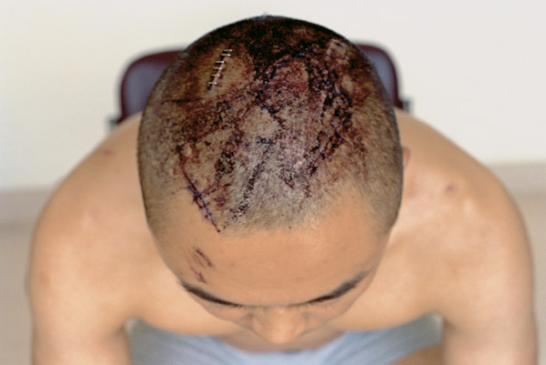
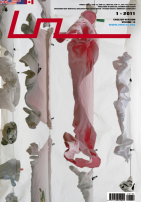



















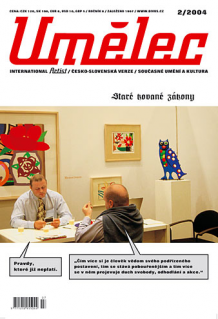




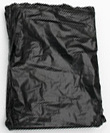
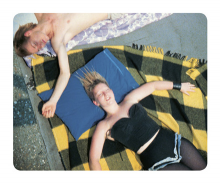
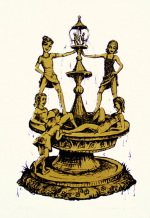
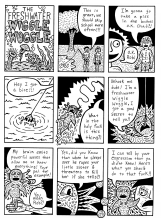


 New book by I.M.Jirous in English at our online bookshop.
New book by I.M.Jirous in English at our online bookshop.
Comentarios
Actualmente no hay comentariosAgregar nuevo comentario